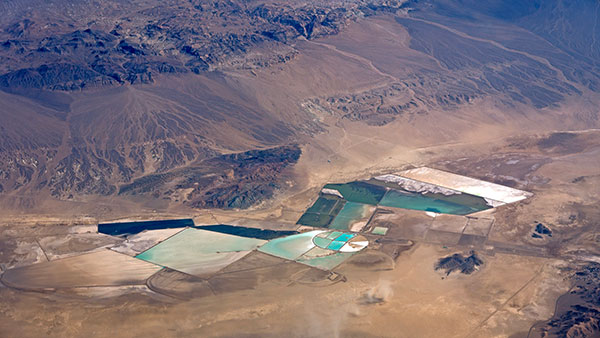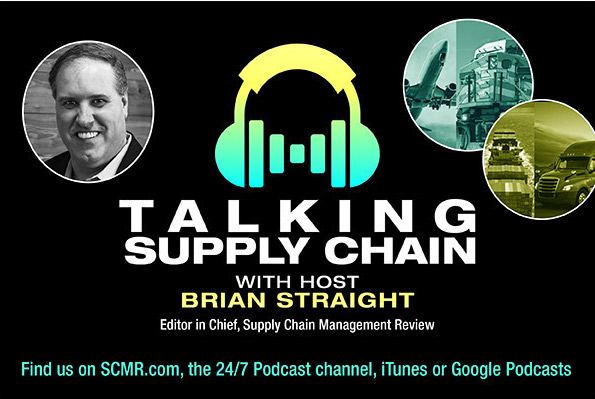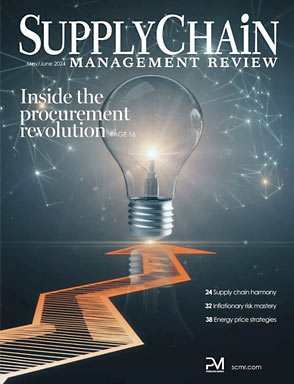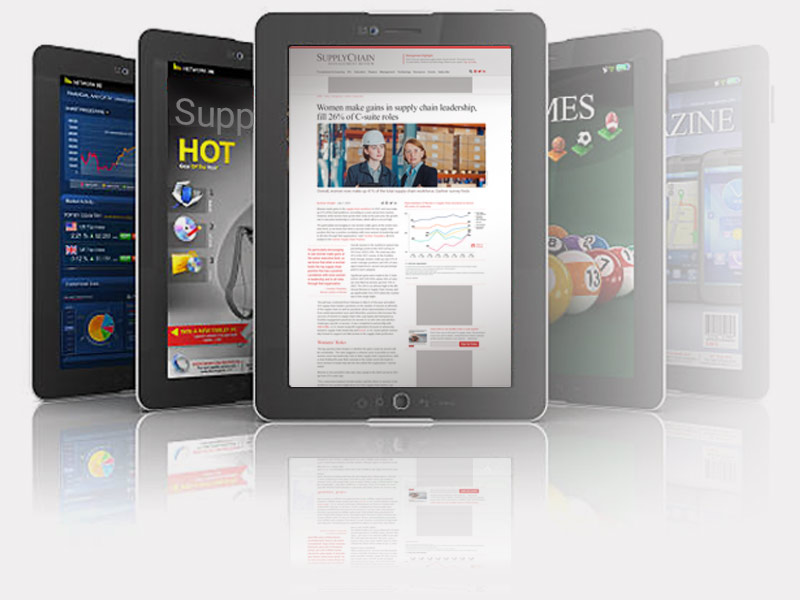By John Bell and Karli Reed
Editor's Note: A version of this post was shared on the University of Tennessee Global Supply Chain Institute’s blog, where supply chain professionals can find essential reading from leading researchers and scholars on the latest trends and topics relevant to global supply chain management. You can read it here.
It has been an interesting decade for supply chain management. From a pandemic to changes in consumer behavior and increased interconnectedness of supply chains, balancing demand and supply has grown increasingly complex. If you are in procurement or the raw materials sector, your job has recently gotten a whole lot harder. Why, you ask?
The answer is simple: a global trade war has started, and the primary battleground is the supply of critical raw materials needed for nearly every industry in every industrial nation. This is especially true for critical minerals, the 50-plus elements on the periodic table that the United States government classifies as being in danger of not meeting demand. Scattered in unequal quantities and diverse locations globally, critical minerals can be a nature-made competitive advantage for those who know how to access and leverage them.
However, as geopolitical tensions rise and costs continue to increase, the supply chain manager’s ability to secure their organization’s availability of a critical mineral supply could be the very thing that creates success or failure for your balance sheet.
Currently, the conversation in the U.S. is centered around the revitalization of domestic manufacturing and the far-fetched idea of immediate self-sufficiency in a global economy. It will be virtually impossible to achieve either without a secure supply of critical minerals. In fact, executives in the mining industry have stated that the future economy and its desire for sustainable energy, AI, and advanced technology will depend on a foundation of critical mineral extraction and processing.
Now it is important to note that every critical mineral has a unique acquisition and production process, so creating a strategy for one will not guarantee strategic success for all. With that in mind, let’s look at the current landscape for one of the most vital critical minerals for high-tech industries: lithium.
Before we get into solutions, let us first understand the problem. Due to the uneven distribution of global lithium supply, the mineral comes with a slew of baggage, including geopolitical tension, social and environmental trade-offs, and the relative monopoly of U.S. supply. At a very high level, global lithium supply comes from two places: Australia in the form of spodumene (hard crystalline) and the South American “Lithium Triangle” of Bolivia, Argentina, and Chile in the form of brine.
You can learn more about lithium extraction here.
The majority of the mined lithium compound (carbonate or hydroxide) from either location is placed on a ship, where it travels to China, Japan, or South Korea for processing into battery or pharmaceutical-grade products. For the U.S., this middle production stage is the portion of the lithium supply chain that holds the most geopolitical risk. Once the lithium is ready to be shipped to individual organizations, one nation holds the supplier power: China.
With their influence, Chinese firms can control price by withholding supply or, inversely, flooding the market to maintain their dominance as the “middle man.” With the current relationship frosty at best, the trickle-down effect of Chinese financial influence is felt by the American consumer, especially with the tariffs currently in place between the two nations.
One response to mounting geopolitical tensions would be to simply mine resources in-country. In the U.S., there are a few large lithium deposits but only one operating mine, located in Silver Peak, Nevada. Albemarle Corporation, a North Carolina-based mining company, owns the operation. In response to the discourse on reshoring mining activities, there are two current explorations for new lithium mines. Albemarle is conducting one outside Charlotte, North Carolina; the company claims it will be the highest-purity lithium deposit in the United States. The other exploration is called Thacker Pass, owned by Lithium Americas, and being developed in partnership with General Motors. Currently, it is the world’s largest known lithium deposit.
While the possibility of lithium mining domestically grows in feasibility, it is important to note that American production will not benefit domestic industries equally. The only industry that will benefit is automotive. Albemarle is currently the largest supplier of lithium for EV batteries and has multiple exclusive supply agreements with Tesla at Silver Peak. Thacker Pass, although not yet operational, has an agreement with General Motors to receive 100% of its Phase 1 production volumes in exchange for funding the exploration and development of the mine itself. Averting geopolitical risk by becoming self-sufficient may not work in regard to lithium supply due to the essential monopoly being secured by the automotive industry’s investment in extraction.
The concept of reshoring might seem as if it’s an immediate solution for the security and resilience of the manufacturing supply chain; however, it is no silver bullet. With the current state of U.S. infrastructure for large-scale mining and processing, it could take a decade to build, at minimum. There will need to be innovation within mining practices to be in accordance with U.S. environmental regulations and the impending pushback to mining activity anywhere near significant urban locations.
Also important to consider when discussing the expansion of lithium mining is the concept of ESG in the overall production and supply. As supply chain managers, we are not strangers to the concepts of tradeoffs. So that leaves one question: what are you willing to give up in order to secure your supply chain?
Historically, lithium mining is very taxing on the freshwater supply in dry, desert-like regions where it is already scarce. It is also commonly unfair to indigenous populations by polluting and taking their resources or promising employment or financial compensation with no follow-through. However, mining is a necessary evil in order to reach broader sustainability initiatives such as battery packs on power grids or the mandated electric vehicle transition. So, it is up to the firm and its shareholders to determine how sustainable a supply chain should be. With that, it’s important to mention that sustainability correlates to longevity and long-term performance, and upfront investments in sustainability can often create a competitive advantage for your firm over time.
Now let’s discuss potential ways to mitigate risks attributed to lithium supply within your organization. Just like any potential bottleneck, you need to have contingency plans in order to be able to survive unexpected events.
Create visibility to the source
Unless you are an upstream supplier, there is a high likelihood that the lithium within your supply chain is reaching you in battery cathode form. Working with your suppliers to sort backwards through the product’s manufacturing steps gives you a clearer picture of where, how long, and who is touching your supply. One reason that gathering visibility has been so difficult is the lack of sufficient technology to piece together all the information moving through an organization and providing a clear view of the flows.
However, supply chain visibility technology has advanced so rapidly that it would not be a shock if visibility software soon became an industry standard. So, it would be worthwhile to purchase software that leverages IoT, AI, and predictive modeling capabilities to identify potential pain points or risk areas in the upstream supply chain for sourcing critical minerals. If used correctly, supply chain visibility technology can be a distinctive competitive advantage.
Establish 'control tower'
Depending on the size and market placement of your organization, this will look different. If you are a large corporation with the financial resources to cover new hires and technological innovations, your organization should consider creating a team dedicated to risk mitigation and continuous monitoring.
However, that kind of expenditure is not always feasible if you are a small company. So, in a smaller firm, you might need to look within your supply chain and partner with a larger company with those mitigation resources. Essentially, the goal for smaller companies is to build relationships with suppliers and customers in order to access the visibility that is vital for short-term risk mitigation and the long-term resilience of your firm.
You can find more information on how to build a control tower here.
Change buying patterns
Circling back to the topic of geopolitical tension and Chinese control over lithium price and supply, it is a good idea to revisit your organization’s current procurement strategy. In recent months, we’ve seen firms shift buying practices in preparation for President Trump’s inauguration, scrambling to secure supply from domestic sources after tariffs were placed on two of the U.S.’s closest trading partners and acquisitions attempted in Ukraine and Greenland.
Ultimately, the rise in geopolitical uncertainty increases the frequency with which you will have to assess your buying patterns in order to stay ahead of the curve. Today, many firms dependent on global sourcing and critical minerals are waking up to a new situation almost every day, and there appears to be no end to this most recent economic/supply chain disruption.
Additionally, since COVID-19, supply chains have been shifting towards patterns of reshoring, and the additional geopolitical risk of recent events will continue to propel that movement.
Be a first mover managing the upstream risk
The last recommendation is a culmination of all the others with one key difference: the timing. If your firm is not already planning for raw material disruptions, you are too late. With uncertainty the only certainty in this world, it is a guarantee that you will always run into unforeseen circumstances and will have to pivot your strategy accordingly.
This can be used as an advantage, though, if you can bounce back quicker and stronger than your competition and capture some of the market share that they leave unfulfilled. Remember that being proactive is better than being reactive; it will keep your organization competitively ahead of others. Use today to prepare for the shifting realities of a dynamic supply chain, and you will be ready to face tomorrow.
To conclude, the central themes of this discussion are visibility, awareness, and preparation. Within the world of supply chain management, your competitive advantage might have been making the lowest-cost product at the fastest possible speed. Today’s ability to achieve competitive advantage depends on end-to-end upstream visibility and the ability to secure critical raw materials for your operations. We believe the firms that are prepared for the global competition for critical minerals will be the ones that outlast those who are not.
Regarding minerals like lithium, now is the time for organizations to identify every single metal within their supply chain and familiarize themselves with the inherent sourcing risks and mitigation options. Prepare your supply chain practices for the complex future ahead, and don’t assume that the availability and cost of your future critical minerals supply is assured.
About the Global Supply Chain Institute
The University of Tennessee's Global Supply Chain Institute (GSCI) is the preeminent hub for supply chain thought leadership and talent development. The pinnacle of GSCI’s efforts is UT’s Supply Chain Forum, which brings together more than 80 of the world’s most innovative and impactful companies twice a year to learn, network, and recruit the country’s top supply chain talent.
About the authors:
John Bell is the head of Haslam’s Department of Supply Chain Management & John H. “Red” Dove Professor of Supply Chain Management and Nancy & David McKinney Faculty Fellow at the University of Tennessee Knoxville. Before joining UT’s faculty in 2010, Bell was a career maintenance and logistics officer in the United States Air Force. His teaching and research interests are in logistics and supply chain management, vehicle routing, facility location selection, hazardous material transportation and supply chain strategy and risk.
Karli Reed is SDP supply chain planning flow controller at Schneider Electric and a recent Haslam College of Business graduate.
SC
MR


More Risk Management Planning
 Explore
Explore
Topics
Procurement & Sourcing News
- C.H. Robinson rolls out AI agent to address LTL classification overhaul
- Danone latest to announce new US investment
- Uber Freight’s Val Marchevsky to deliver Keynote at NextGen Supply Chain Conference
- Unlocking the green grid: Innovations for eco-friendly last mile
- Dealing with supply chain complexities with scenario intelligence
- Securing critical minerals during a global trade war
- More Procurement & Sourcing
Latest Procurement & Sourcing Resources

Subscribe

Supply Chain Management Review delivers the best industry content.

Editors’ Picks




